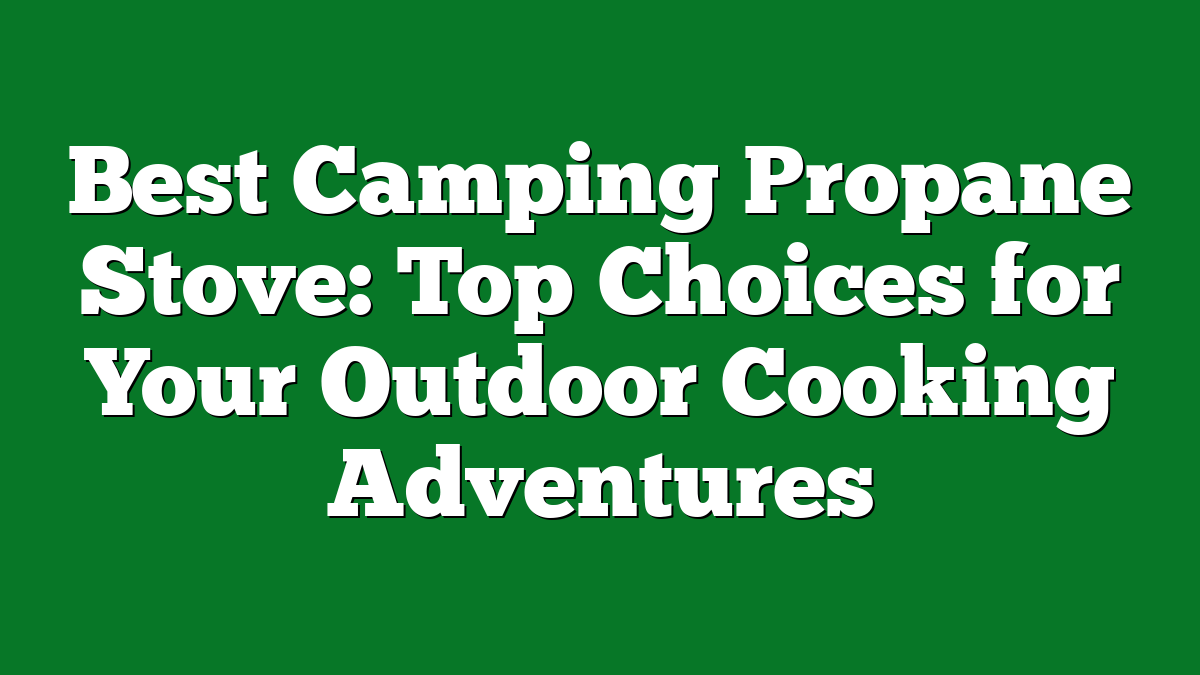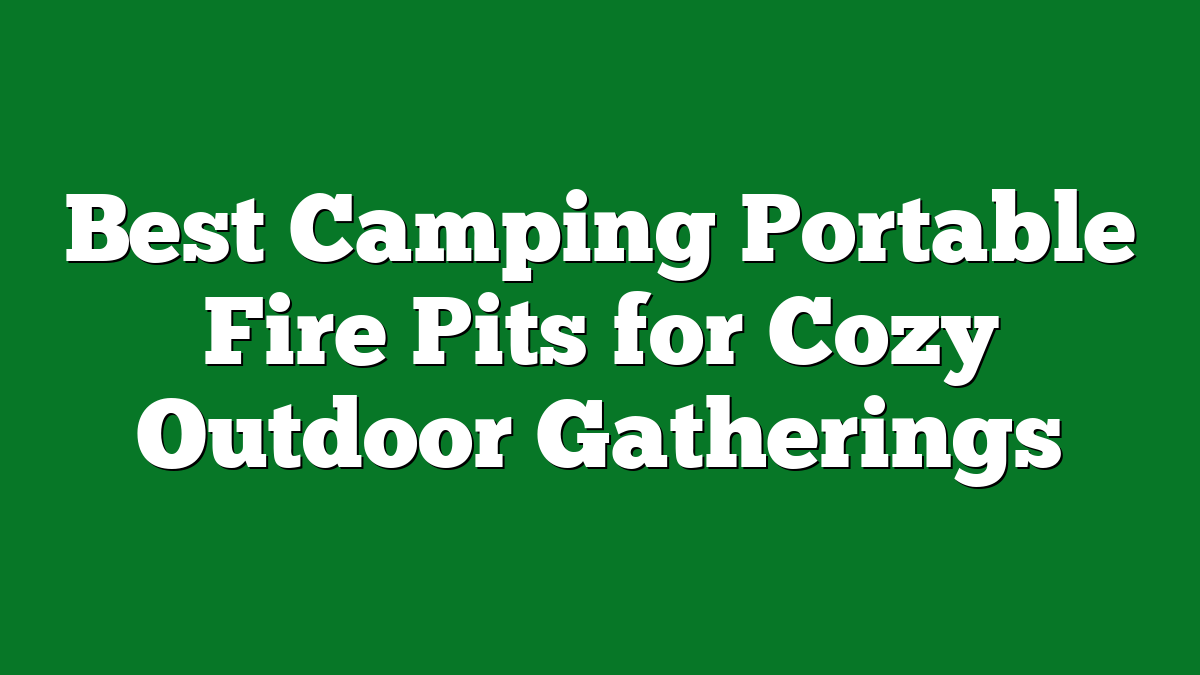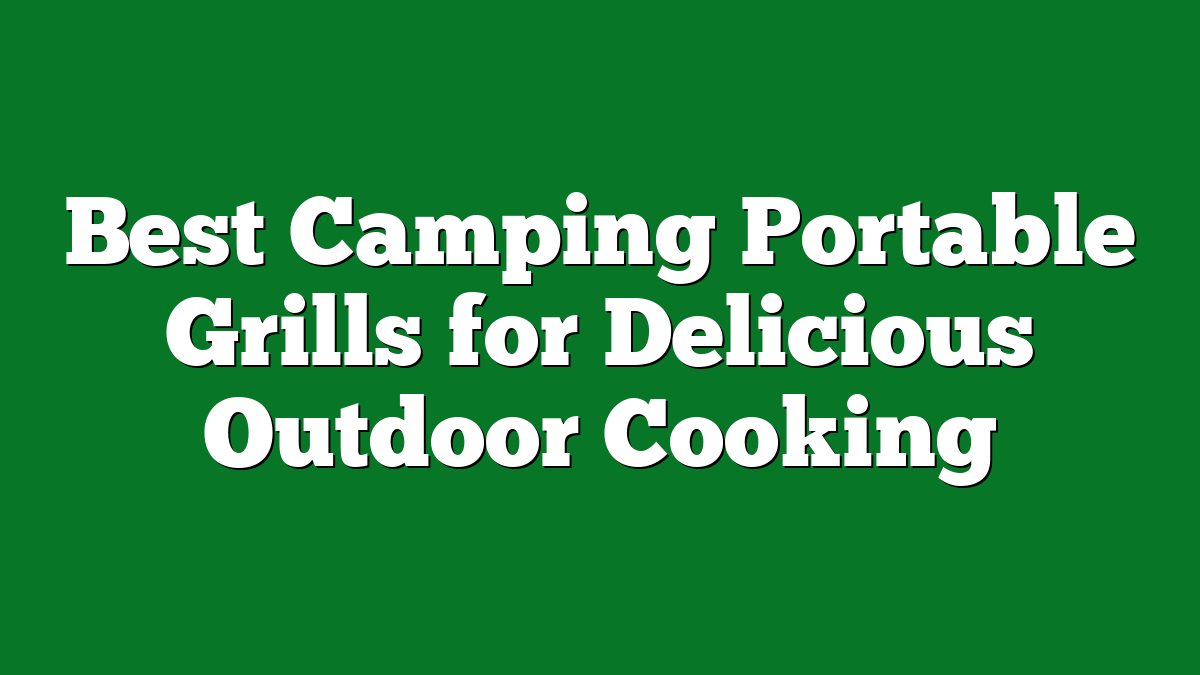There’s nothing quite like cooking outdoors, and a portable stove can be your best friend in those moments. Whether you’re camping in the woods or enjoying a backyard barbecue, knowing how to use your portable stove efficiently can elevate your culinary experience. I’ve learned a few tips and tricks along the way that not only save fuel but also enhance flavor and cooking time.
Guide to Using a Portable Stove Efficiently
Using a portable stove enhances cooking outdoors, making it simple to prepare meals while enjoying nature. Here’s how to maximize efficiency.
Choose the Right Fuel
I opt for fuels based on the stove type and cooking duration. Common fuels include:
- Propane: Provides quick heat and burns cleanly.
- Butane: Offers compact canisters, perfect for short trips.
- Liquid fuel: Versatile for long-term usage and can be found in various environments.
Prepping Ingredients
I prepare ingredients before heading out. Chopping vegetables or marinating meat at home not only saves time but also reduces waste. Pack items in resealable bags to keep everything organized.
Use a Heat Shield
I always bring a heat shield with my portable stove. A heat shield reflects heat toward the cooking surface, allowing for quicker cooking. This helps conserve fuel and protects the environment around my cooking area.
Control Flame and Heat
I adjust the stove’s burner to control the flame. A lower flame maintains simmering temperatures while conserving fuel. A medium-high flame works for boiling water quickly, essential for meals like pasta or rice.
Optimize Cooking Techniques
Adopting a few cooking techniques makes a difference. I often use these methods:
- One-pot meals: Minimize cleanup by cooking everything in one pot.
- Batch cooking: Make larger portions at once to enjoy leftovers later.
- Use lids: Cover pots to trap heat and speed cooking time.
Keep It Clean
Cleaning the stove after use ensures optimal performance. I carry a small brush and cloth for quick clean-ups, preventing grease buildup and keeping everything sanitized for future outings.
Practice Safety Measures
Safety is a priority when using a portable stove. I set the stove on stable, flat surfaces away from flammable materials. Always have a fire extinguisher nearby in case of emergencies.
By following these tips, my outdoor cooking experience becomes efficient and enjoyable, allowing me to focus more on the adventure ahead.
Types of Portable Stoves
As an avid camper, I’ve experimented with various portable stoves suited for outdoor cooking. Understanding the types can significantly enhance your camping experience.
Fuel-Based Stoves
Fuel-based stoves dominate the camping landscape due to their simplicity and efficiency. They primarily operate on three types of fuel: propane, butane, and liquid fuel.
- Propane Stoves: I often use propane stoves for their power and ease of use, providing high heat and a consistent flame. They work well for boiling water quickly or cooking hearty meals.
- Butane Stoves: Lighter and more compact, butane stoves are perfect for solo trips. They ignite easily and maintain a steady flame, making them ideal for quick meals or snacks.
- Liquid Fuel Stoves: For longer excursions, I prefer liquid fuel stoves. They run on white gas, which is efficient for multi-day trips, allowing for more fuel storage without excessive weight.
Choosing the right fuel stove depends on your cooking needs and how much weight you’re willing to carry.
Electric Stoves
Electric stoves offer a different camping experience, especially if you have access to a power source such as a campsite with electric hookups.
- Electric Coil Stoves: These provide reliable heat and are often found in RVs. They’re easy to use, ideal for preparing meals like stir-fries.
- Induction Cooktops: While a bit more advanced, they bring the convenience of home cooking to the outdoors. Induction cooktops heat quickly, reducing meal prep time but require compatible cookware.
Electric stoves are excellent for family camping trips when campgrounds provide electricity, but they limit portability.
Understanding the different types of portable stoves helps ensure a successful and enjoyable cooking experience while camping.
Preparing for Use
Preparing for a portable stove’s use involves careful planning and attention to detail. Getting set up right enhances the cooking experience and ensures safety during my outdoor adventures.
Choosing the Right Location
Choosing the right location for my portable stove makes a significant difference. I always opt for a flat, stable surface away from flammable materials and strong winds. Placing the stove on a picnic table or a designated cooking area works best. Proximity to my water source, such as a lake or river, also helps streamline cooking and cleanup. I keep a safe distance from my tent or sleeping area to minimize fire hazards.
Gathering Necessary Equipment
Gathering necessary equipment is crucial for a successful cooking session. I ensure I’ve got a full fuel canister, stove, and cooking pots or pans before heading out. I also pack utensils like spatulas, ladles, and cutting boards for convenience. Bringing along weather-proof matches or a reliable lighter ensures I can ignite the stove, even in damp conditions. Additionally, I always carry a small sponge or cloth for quick cleanups and a fire extinguisher or a bucket of water for safety. By having everything ready, I can focus on enjoying great meals outdoors.
Cooking Techniques
Cooking outdoors with a portable stove adds simplicity and efficiency to my camping adventures. Knowing a few techniques can enhance the experience while making sure meals turn out delicious every time.
Optimal Heat Settings
Setting the proper heat level is essential for great cooking. When I use my portable stove, I start by adjusting the flame according to the dish. For boiling water or cooking pasta, I crank it up high to save time. Once I reach a boil, I dial it down to maintain heat, avoiding overboiling. For dishes that need slow cooking, like stews or sauces, I keep the flame low and stir occasionally. Identifying the right heat settings prevents burning and helps to evenly cook meals, maximizing flavor.
Time Management
Managing time in the wilderness is crucial for maximizing enjoyment and minimizing hassle. I often prep ingredients at home, chopping vegetables and marinating proteins ahead of time. When I get to my campsite, everything’s ready to toss onto the stove, speeding up the cooking process. I also keep track of cooking times for each ingredient, adding items based on their required cooking durations. For example, heartier vegetables like potatoes take longer, so I toss those in first. This approach not only simplifies meal prep but also allows me to spend more time enjoying the outdoors.
Safety Tips
Using a portable stove while camping is a great way to prepare delicious meals, but safety should always come first. Keeping a few key safety tips in mind can enhance every cooking experience.
Avoiding Common Hazards
Stability matters. Always set up the stove on a flat, stable surface, avoiding soft ground or areas with slopes. Flammable materials, such as dry leaves or sticks, should be kept at least three feet away from the stove. Be cautious of the wind direction, as strong gusts can create flare-ups. Using a windscreen can protect the flame and enhance cooking efficiency. If I’m cooking with liquid fuel, I pay special attention to spills, as they increase fire risk. It’s also wise to supervise the stove continuously and never leave it unattended.
Proper Ventilation
Ventilation plays a crucial role. Cooking outdoors usually provides ample ventilation, but if I find myself in a confined space, like a tent or shelter, I ensure there’s enough airflow. Carbon monoxide can accumulate from certain fuels, posing serious dangers. Keeping the stove away from walls or overhanging structures allows for proper air circulation. If I operate an electric stove, I confirm the power source is safe and grounded, avoiding any potential electrical hazards.
Conclusion
Using a portable stove can truly elevate your outdoor cooking experience. With the right techniques and a bit of preparation, you can whip up delicious meals while enjoying nature. I’ve found that being mindful of your fuel choice and cooking methods makes all the difference.
It’s all about finding what works best for you and your adventures. Whether you’re camping with friends or enjoying a solo trip, embracing these tips can help you cook efficiently and safely. So gear up and get ready to create some fantastic outdoor meals. Happy cooking!











